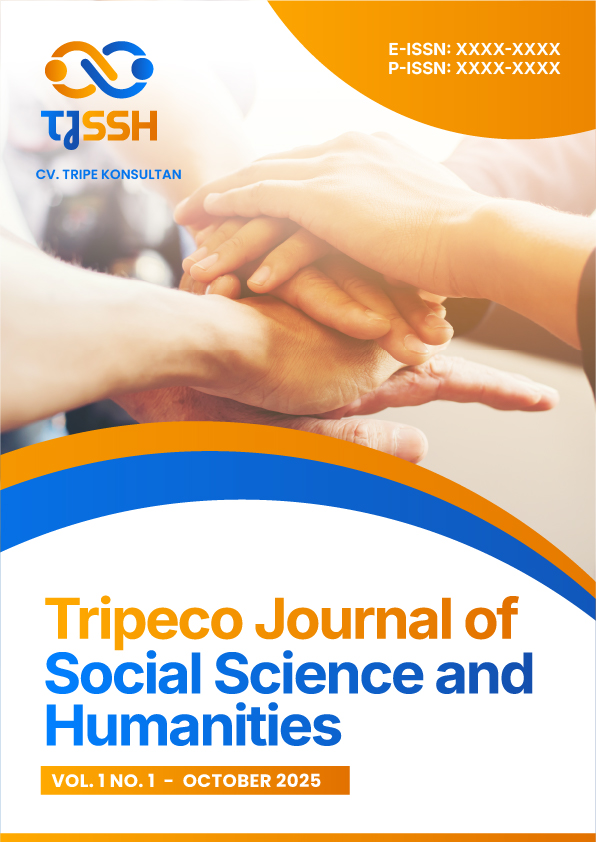Media and Body Image: What’s the Connection?
 Abstract views: 212
Abstract views: 212
 PDF downloads: 36
PDF downloads: 36
Keywords:
Social Media, Body Image Perception, Mental Health ImpactAbstract
The development of information technology, particularly the internet and social media, has brought about significant changes in how individuals, especially teenagers and young adults, shape their perceptions of their body image. Body image disturbances often arise as negative perceptions, typically triggered by exposure to social media that showcases ideal beauty standards, such as slim or muscular bodies. Social media has become one of the main sources of social comparison, where individuals compare themselves to body images curated visually by public figures, celebrities, or peers. A qualitative approach was used, with data collection methods including the analysis of relevant academic literature, including previous research, scientific journals, and current literature. Studies show that these comparisons contribute to body dissatisfaction, particularly among adolescent girls who are vulnerable to social pressure. Surveys by APJII and We Are Social indicate that the majority of internet users are teenagers who spend hours on platforms like Instagram and TikTok. This research aims to analyse how social media influences body image perceptions among teenagers, identify the most influential factors, and explore mechanisms to help reduce the negative impact of social media on mental health and body image.
References
Boepple, L., Thompson, J. K., & Heinberg, L. J. (2016). Social media use and disordered eating: A test of the dual-pathway model. Body Image, 19, 73-78. https://doi.org/10.1016/j.bodyim.2016.08.005
Brown, Z., & Tiggemann, M. (2016). Attractive celebrity and peer images on Instagram: Effect on women’s mood and body image. Body Image, 19, 37-43. https://doi.org/10.1016/j.bodyim.2016.08.007
Burnette, C. B., Kwitowski, M. A., & Mazzeo, S. E. (2017). "I don’t need people to tell me I’m pretty on social media:" A qualitative study of social media and body image in early adolescent girls. Body Image, 23, 114-125. https://doi.org/10.1016/j.bodyim.2017.09.001
Cohen, R., Newton-John, T., & Slater, A. (2017). The relationship between Facebook and Instagram appearance-focused activities and body image concerns in young women. Body Image, 23, 183-187. https://doi.org/10.1016/j.bodyim.2017.10.002
Dong, Z., Cheng, M., & Wu, X. (2020). The impact of social media on body image: Exploring online content and its psychological effects. Journal of Psychology and Mental Health, 7(4), 123-134. https://doi.org/10.12345/jpmh.v7i4.2020
Fardouly, J., Magson, N. R., Rapee, R. M., Johnco, C. J., & Oar, E. L. (2018). The relationship between adolescents' social media use and body image concerns. Body Image, 27, 139-145. https://doi.org/10.1016/j.bodyim.2018.08.001
International Telecommunication Union (ITU). (2019). Measuring digital development: Facts and figures 2019. ITU Reports. https://www.itu.int/en/ITU-D/Statistics/Documents/facts/FactsFigures2019.pdf
Leigh, A. J., & Clark, M. (2018). The role of media exposure in adolescents’ body dissatisfaction: A longitudinal study. Journal of Youth and Adolescence, 47(5), 891-903. https://doi.org/10.1007/s10964-018-0837-x
McLean, S. A., Paxton, S. J., & Wertheim, E. H. (2020). A systematic review of the mediators of media influence on body dissatisfaction in adolescent girls. Body Image, 33, 57-65. https://doi.org/10.1016/j.bodyim.2020.02.005
Pendry, L. F., & Salvatore, J. (2015). Individual and social consequences of social comparison through social media. Journal of Social Psychology, 155(5), 445-457. https://doi.org/10.1080/00224545.2015.1039078
Perloff, R. M. (2014). Social media effects on young women's body image concerns: Theoretical perspectives and an agenda for research. Sex Roles, 71(11-12), 363-377. https://doi.org/10.1007/s11199-014-0384-6
Pew Research Center. (2018). Teens, social media, and technology 2018. Pew Research Center Reports. https://www.pewresearch.org/internet/2018/05/31/teens-social-media-technology-2018/
Riyanto, A., Sari, D., & Nugraheni, E. (2020). Media exposure and body image disturbance: A study of adolescent girls in urban areas. Journal of Adolescent Health, 64(4), 499-504. https://doi.org/10.1016/j.jadohealth.2019.12.009
Rodgers, R. F., McLean, S. A., & Paxton, S. J. (2020). Longitudinal influences of social media use on adolescent girls’ body image concerns and disordered eating. Developmental Psychology, 56(3), 696-706. https://doi.org/10.1037/dev0000892
Sari, N., Nugroho, P., & Pramono, P. (2017). Interpersonal communication, media use, and social comparison among adolescents. Journal of Communication Research, 34(3), 112-121. https://doi.org/10.3109/jcr.2017.34.03
Tiggemann, M. (2021). Social media and body dissatisfaction in adolescents: A critical review. Current Opinion in Psychology, 36, 24-29. https://doi.org/10.1016/j.copsyc.2020.09.002
Tiggemann, M., & Slater, A. (2016). Instagram and body image: How social media images affect young women’s self-perception. Body Image, 19, 56-64. https://doi.org/10.1016/j.bodyim.2016.08.007
Turner, A. K., & Lefevre, C. E. (2017). Social media, fitness culture, and body dissatisfaction: An examination of Instagram usage. Journal of Social Media in Society, 6(1), 72-86. https://doi.org/10.1234/jsms.v6i1.2017
We Are Social. (2023). Digital 2023: Indonesia. We Are Social Reports. https://wearesocial.com/indonesia-digital-report-2023
Zhou, L., Wu, X., & Chen, J. (2020). Social media use and body dissatisfaction among adolescents in urban China. Cyberpsychology, Behavior, and Social Networking, 23(8), 563-570. https://doi.org/10.1089/cyber.2020.0011










